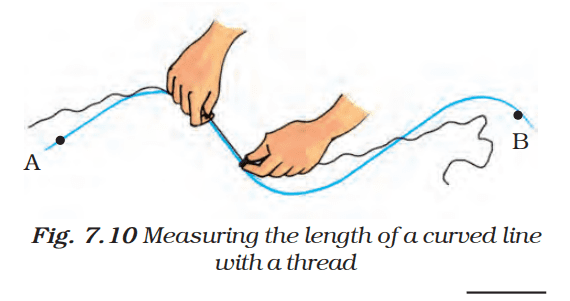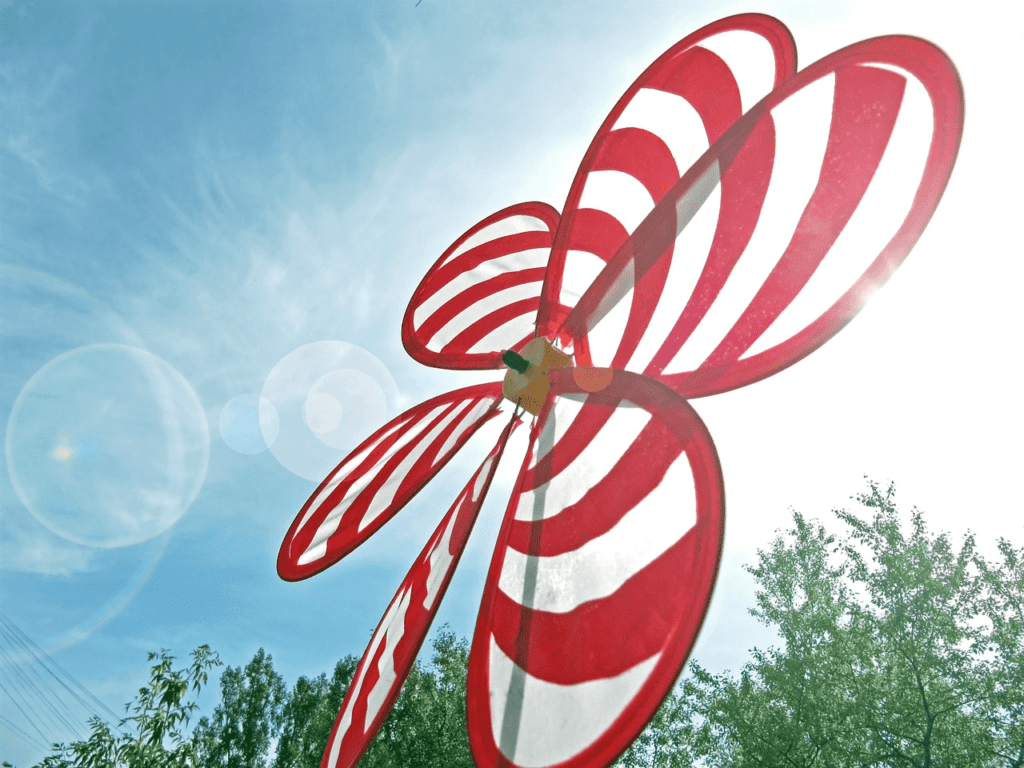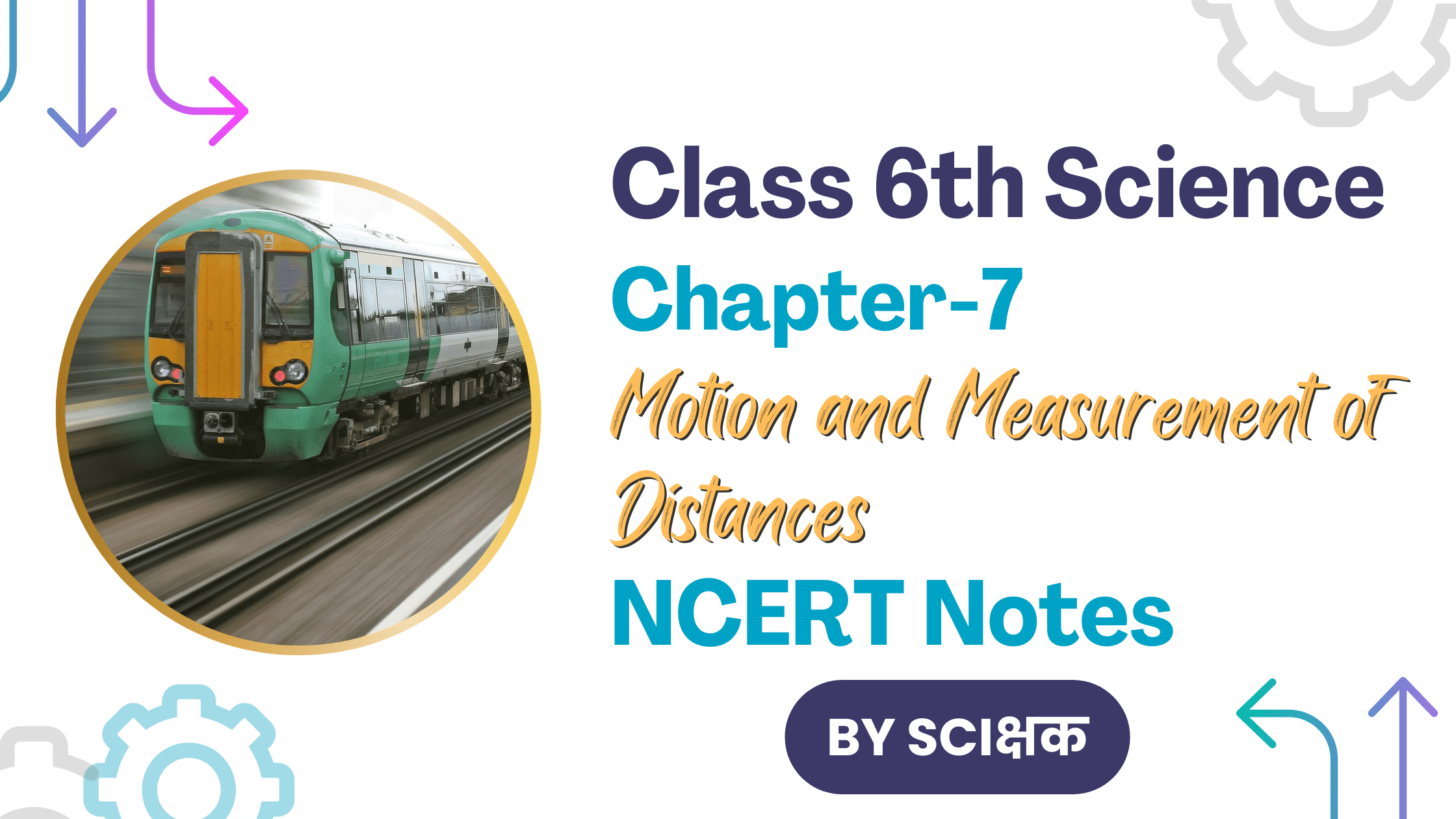Before starting with Class 6 Science Chapter 7 i.e. ‘Motion and Measurement of Distances’, I am hoping that you have completed the 6th chapter. If not, then you can go through its Notes and NCERT Exercise Solutions whose links have been provided below. ⤵️
Table of Content
Introduction
This chapter is about the story of different means of transportation, methods and various units of measurement and different kinds of motions.
Story of Transportation
So, let me ask you, how do you go to your school daily from your home?
Maybe by walking if your school is near your home or maybe via a bus, motorbike, bicycle, car, etc. if your school is situated at some distance from your home that can’t be covered on feet.
Do you know any other vehicles or modes of transportation than those mentioned above?
You may know about trains, aeroplanes, ships, rockets, submarines, spaceships, helicopters, etc.
You know we didn’t invent or get all these various advanced modes of transportation overnight, it’s a very long story stretched across thousands of years.

The story of transportation can be described briefly as such:
- The first mode of transportation was human feet, people used to walk long distances.
- Then we started to use animals for transportation including donkeys, oxen, horses etc.
- Then, simple logboats (wooden logs in which we dug out cavities) were invented to travel across water.
- Then, the wheel was invented which changed transportation completely. Animals were used to pull carts that moved on wheels
- Then, steam engines were invented which led to the development of new modes of transportation. e.g. steam trains, steamboats, steam wagons etc.
- Then, we invented petrol and diesel engines that changed the transportation industry completely, leading to the development of motor cars, motorised boats, motorbikes, etc.
- Then, the Wright Brothers invented aeroplanes in 1903, which were later improved to carry goods and people.
- In the last century, we have developed electric vehicles, supersonic aeroplanes, spacecraft, rockets, bullet trains, self-driving cars, hydrogen cars, etc.
Measurement of Distances
To be able to know the exact dimensions (length, breadth, height) of something is really important for us.
For examples,
- We should know how far our school is from our home so that we can use an appropriate mode of transportation.
- A tailor needs to know the length of the cloth so that he/she can stitch a kurta.
- Farmers need to know the lengths and breadths of their fields so that they can know how much seed to buy, how much water is needed for irrigation, how much fertilizers are needed, etc.
Various (Non-Standard) Units of Measurement of Distances
But before that, we should know, what measurement means.
Measurement means the comparison of an unknown quantity with some known quantity.
The known quantity or standard quantity is known as a unit.
Measurement is expressed in two parts:
- Part one is a number or magnitude.
- Part two is the unit of measurement.
e.g. Suppose we measured your height and it is 1.5 metres. Here, 1.5 is the number term and metre is the unit of measurement. This means that we compared you with a one-metre standard scale and you were 1.5 times that scale.
But what is a metre?
We will get to know about it further in the chapter.
1. A Foot
As the name suggests ‘a foot’ is the length of one’s foot. People use their feet to measure distances.

2. Handspan
A handspan is the distance from the tip of your thumb to the tip of the pinky (little) finger with the hand fully extended.

3. A Yard
A yard is the distance between the end of the outstretched and your chin.

People mainly used to measure clothes in this unit.
4. A Cubit
A cubit is the distance from the elbow to the fingertips.

Distances were measured in cubits in ancient Egypt.
5. Other Non-standard units of distance measurement
Along with the most common 4 non-standard units of distance measurement, some other units were also used all around the world:
- Romans used their steps or pace to measure distances.
- In ancient India small distances were measured in Aṅgula (finger width length) and a mutthi (fist length), etc.
Standard Units of Measurements
Most of the (non-standard) units of distance measurements were based on the length of different body parts and the length of these body parts changes over time, from place to place so they can’t be relied upon.
What I mean by this is that the length of your foot and my foot are different and if we are to measure some length then we are going to get different measurements.
So, we needed some standard units that don’t change with time and from place to place and then in 1790, the French created a standard system of measurement called the metric system.
| Quantity | Unit of measurement used in Metric system |
| Distance or Length | Metre (m) |
| Mass and Weight | Kilogram (Kg) |
| Time | Seconds (Sec) |
Scientists all over the world have accepted a set of standard units of measurement known as the International System of Units (SI Units).
| Quantity | SI unit of Measurement |
| Length | Meter (m) |
| Mass | Kilogram (Kg) |
| Time | Second (Sec) |
| Temperature | Kelvin (K) |
| Current | Ampere (A) |
| Amount of substance | Mole (mole) |
| Luminous intensity | Candela (cd) |
For measuring small distances we use:
- Centimetre: which is 1/100th of a metre.
- Milimetre: which is 1/10th of a centimetre or 1/1000 of a meter.
For measuring large distances we use:
- Kilometre: which is 1000 metres.
How to Measure Lengths Correctly
To measure something accurately, the foremost important thing we need to take care of is:
The Selection of the right measuring device.
e.g. various one-metre-long measuring devices we have like metre rode, measuring tape, etc. As we can’t measure the girth of a tree or our chest with a metre rod we need to use something flexible like a measuring table and like this cloth merchants use a metre rod for the measurement of clothes.
For small measurements, we are going to use the 15cm scale that comes in our geometry box.
- Place the scale in contact with the length that we want to measure as shown in the picture. With the starting point (0 point at the start of the length).

2. If in your scale the starting 0 end is broken then use any other full mark (0-15 Cms marks) as the starting point and subtract the readings of this mark from the length measured at the other mark.

One important thing that needs to be taken care of while measuring some distance with a scale is the proper reading of the scale with your eyes exactly in front of the measuring point not sideways.
Measuring the Length of A Curved Line
As we can’t measure a curved line with a scale and a metre rod. So, we are going to devise a new method for indirect measurement of the length of a curved line.

- Let’s say we want to measure the distance of the curved line AB.
- For this, we are going to use a thread and a scale.
- Tie a knot on the thread near one of its ends.
- Place this knot on point A of the curved line.
- Now place a small portion of the thread along the line, keeping it taut (stretched) using your fingers and thumb.
- Hold the thread at this end with one hand. Using the other hand, stretch a little more portion of the thread along the line.
- Go on repeating the process till we reach at the point B.
- Make a mark on the thread where it touches the point B.
- Now stretch the thread along the metre scale and measure the distance from the knot to the marked point.
And this is how we are going to measure the distance of a curved line.
Motion & Its Types
An object is said to be in motion or moving if it changes its position with time.
e.g. the hands of a clock show motion because they change their position with the passage of time, Earth is said to be moving because it rotates or changes its position by rotating around the sun, ants moving on the ground, birds flying, etc. They all are in a motion of some sort.
Some of the most common types of motion are:
1. Rectilinear Motion
An object is said to be in a rectilinear motion if it moves along a straight line.

e.g. cars moving on a straight road, a ball rolling down a straight path, etc.
2. Rotational & Circular Motion
An object is said to be in a circular motion if it rotates around a fixed axis or point that is outside of its body.
e.g. Take a stone, tie a thread to it and whirl it. Stone will undergo circulatory motion with its axis of rotation being your hand in which you are holding the thread.
Rotation of the Earth around the Sun is also an example of circulatory motion in one sense.
An object is said to be in a rotational motion if its body’s rotating axis is inside the body.

e.g. Rotation of ceiling fan, rotation of Earth on its axis, firki rotating on its axis etc.
3. Periodic Motion
An object is said to be in a periodic motion if it repeats its motion after a fixed interval of time.
e.g. A clock’s hour hand struck 1 twice a day with a time interval of 12hrs, so there is a periodic motion there. Kids swinging to and fro on a swing, strings of a guitar, membrane of a tabla, pendulum, etc. they all examples of objects in periodic motion.
Objects can undergo more than one kind of motion at the same time.
For e.g. Earth’s rotation around the Sun is an example of circular motion, rotational motion and period motion (as Earth repeats this motion every year).
A ball rolling down a straight path is undergoing both rectilinear as well as rotational motion.
Conclusion
To understand the motion of and in various objects and organisms, measurement of the motion and quantities is really important.
That’s how we got to know that the cheetah is the fastest land animal, sloths are the slowest land animals and falcons can fly up to a speed of 390 Kms/hr, etc.
References & Credits
- Class 6 Science NCERT Textbook.
- Image by Clker-Free-Vector-Images from Pixabay
- Image by wal_172619 from Pixabay
- Image by Alexandr from Pixabay
- Image by Robert Owen-Wahl from Pixabay
- https://unacademy.com/content/jee/difference-between/circular-and-rotational-motion/#:~:text=A%20rotating%20motion%20in%20which,axes%20are%20inside%20the%20body.
Thank You for Choosing Sciक्षक ❤️

